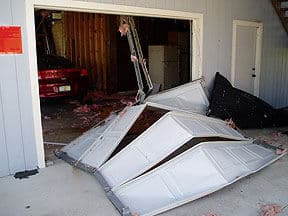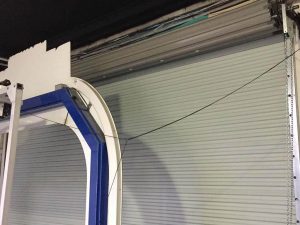Impact-rated garage doors have the features required to resist the mania of hurricanes, storms and, surely, all wind situations. Then again, whether or not the garage door is damaged during a fierce storm is subject to its overall condition. Its construction too. Not all residential garage doors in hurricane-prone areas are the same. Qualities vary, while quality matters. Some don’t even meet – at least, not fully, the building codes. And then, it has to do with the storm too – how bad it is and how close to the home is.
Assuming that the garage door is still in place when the storm goes and it seems intact, you need to thoroughly check it to be sure it’s functional and, above anything else, safe.
Well, it’s always best to leave this task to a garage door repair technician, just in case there’s a serious problem, which may put you in harm’s way. But if you insist on doing the garage door inspection yourself, this is what you need to do.
Visual garage door inspection

This first step gives you the chance to take a general look at the overall condition of the garage door and see if there are some signs of serious damage, by standing farther away from the door.
While you are standing outside, pay attention to two things: the garage door framing and the panel. When you stand inside, let your eyes travel over all parts to see if there’s anything unusual. For example, if the garage door torsion spring is broken, you will see it cut in half above the door. If the cables came off, you will see them hang loose.
Close look at the garage door tracks

With the garage door not moving, it’s not easy to tell if the tracks are aligned. But if you see any of their fasteners protruding, it’s likely that the tracks will be misaligned. On the other hand, you may notice track damage.
Garage door balance/spring testing
Disconnect the opener by pulling the red emergency release cord to move the garage door manually. See that you CAN do that. If not, the spring is broken. If the garage door is moving upwards, test its balance. See if it still stands open mid-way up or it slides down. See if it remains open when you push it all the way up or it starts moving downwards. If the garage door slides down or doesn’t open, there’s a spring problem. For the spring repair, you will need a technician – don’t forget its tension.
Attention to garage door noises
With the opener still disconnected, move the door up and down a few times – provided that you can do that and the spring is alright, to see if you hear odd noises. To make sure that the door makes the cycling (up & down) movement without obstructions. If something keeps it from moving smoothly, there’s likely something wrong with the garage door tracks and rollers that you haven’t noticed.
Garage door opener troubleshooting
Assuming there’s electricity in your area, reconnect the garage door opener and see if it works. To do that, push the button to make the garage door work automatically and check if it does so or there are noises. If everything is okay, use the remote control to automatically open the garage door once again to see that the device works too.
Make sure the lights turn on both times and that the garage door moves all the way up and down. If not, some adjustments will be needed and it’s best to call a garage door opener repair technician.







